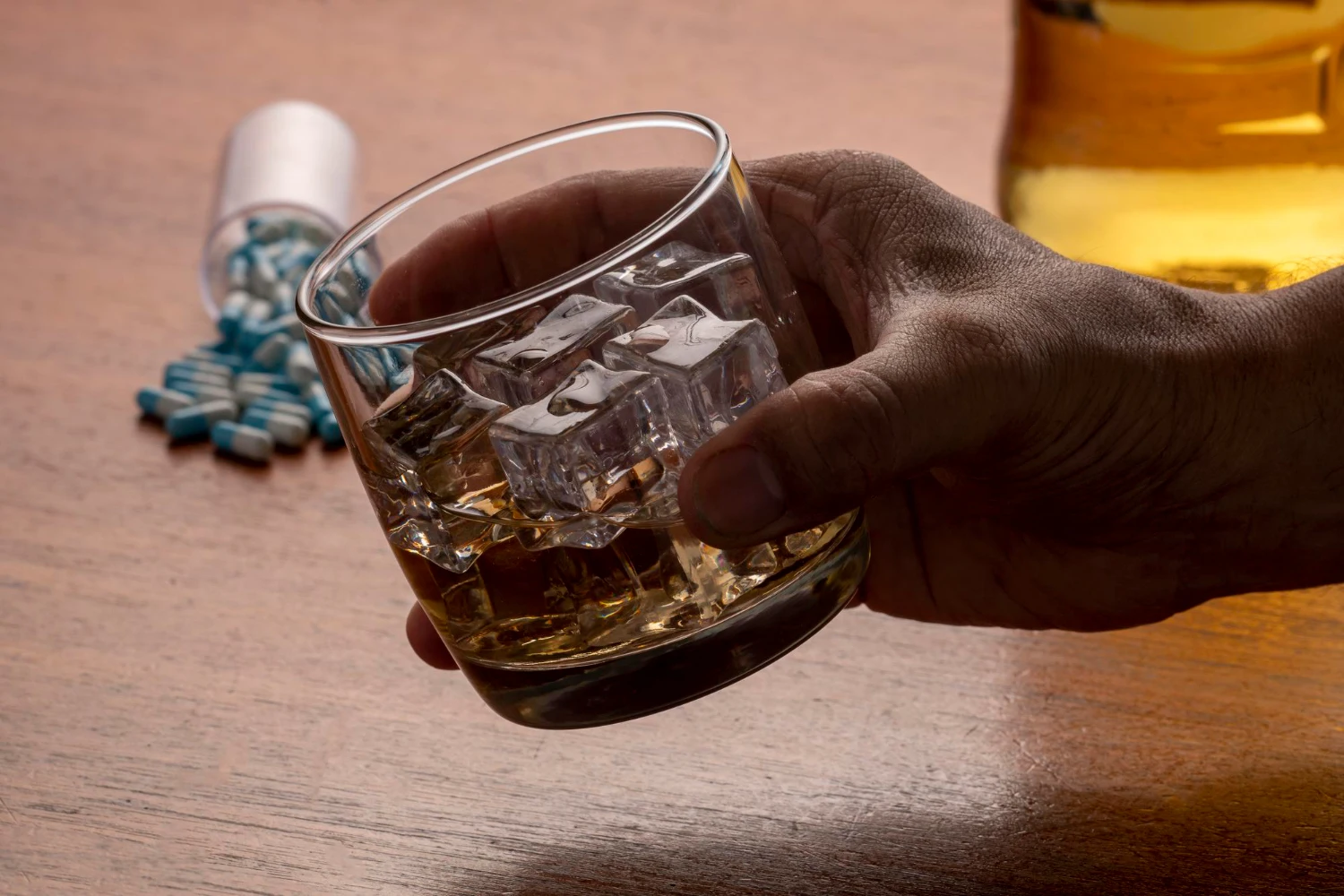The Struggle with Opioids and Alcohol Addictions
Substance use disorders, also referred to as addiction, encompass a variety of conditions marked by the compulsive and detrimental consumption of substances, including but not limited to drugs like alcohol, opioids, and stimulants.

The growing incidence of alcohol and opioid use disorders has presented an intensifying public health crisis in the United States throughout the last several years. Alcohol and opioids taken together can have a very negative effect on people and seriously shorten their lives.
The National Survey on Drug Use and Health (NSDUH) reported that in 2022, there were 6.1 million individuals with an opioid use disorder and 29.5 million individuals with an alcohol use disorder.
In this article, we will look at the dangers and consequences of having opioid and alcohol use disorders concurrently, as well as the available treatment options.
Understanding Concurrent Opioid and Alcohol Addictions
The problematic consumption of opioids characterizes opioid use disorder (OUD); this includes both prescribed medications such as oxycodone and illicit substances like heroin. Alcohol Use Disorder (AUD) is a chronic illness characterized by the inability to control or stop drinking despite negative consequences. There is a correlation between OUD and a higher probability of developing AUD. While Opioid Use Disorder (OUD) and Alcohol Use Disorder (AUD) are both important disorders on their own, their simultaneous presence poses unique challenges and health risks.
Substance use disorder diagnoses and their severities- classified as "mild," "moderate," or "severe" are currently defined by the Diagnostic and Statistical Manual of Mental Disorders (DSM), 5th Edition, which include:
-
Taking the substance for longer periods than intended.
-
Using the substance in larger amounts than intended.
-
Spending a lot of time obtaining, using, and recovering from the effects of the substance.
-
Experiencing cravings or intense desires or urges for the substance.
-
Failing to fulfill obligations at home, work, or school due to substance use.
-
Continuing substance use despite having interpersonal or social problems that are caused or worsened by substance use.
-
Giving up social, recreational, or occupational activities due to substance use.
-
Using the substance in risky situations.
-
Continuing substance use despite having a physical or mental problem that is probably due to substance use.
-
Developing tolerance or needing more of the substance to achieve previous effects.
-
Experiencing withdrawal symptoms when you stop using your substance of choice.
A healthcare professional diagnoses you with a SUD if you meet two or more criteria. If the requirements are met for both opioids and alcohol, then both disorders are diagnosed concurrently.
What are the Factors Contributing to Concurrent Addiction?
A combination of genetic predisposition and the effects of alcohol and opioids on the brain's reward system can lead to the onset of dual addiction. It has been described that almost 20 out of 100 people co-use both substances.
Mental health disorders, including depression, anxiety, and post-traumatic stress disorder (PTSD), can all play a role, as self-medicating with both substances is a coping mechanism.
Both opioid and alcohol misuse are influenced by social and environmental factors such as peer pressure and the prevalence of substance use environments.
Finally, the ease of access to both alcohol and opiates contributes to the prevalence of addiction in this population.
Polysubstance users intentionally engage in this behavior to enhance the effects of a single substance, compensate for the weakened effects of one substance, avoid withdrawal symptoms, alleviate stress, and replace their preferred drug of choice when it’s unavailable.
Risks and Dangers of Concurrent Opioid and Alcohol Addictions
The combined use of opioids and alcohol may have a bigger impact than either substance alone. Both substances depress the central nervous system, causing sleepiness, poor coordination, and slow breathing. These substances amplify each other’s effects, resulting in excessive sleepiness, confusion, and even loss of consciousness. This combination also heightens the risk of accidents, falls, and injuries.
Their combination can worsen liver injury, raise your risk of developing liver disease, and increase the likelihood of heart attacks, strokes, arrhythmias, hypertension, and severe cardiovascular dysfunction. Also, severe neurological and psychiatric disorders can be exacerbated, such as psychosis, paranoia, hallucinations, and blackouts.
The relationship between substance use problems and mental health concerns is typically intricate, leading to a worsening of both disorders and the establishment of a detrimental cycle.
Overdose is one of the most severe consequences. This mix is extremely dangerous and could result in death.
Financial and legal problems, as well as arrests, jail time, and attempted suicide, are all more likely.
How Are Concurrent Opioid and Alcohol Addictions Treated?
Addressing the co-occurrence of opioid and alcohol addictions may provide considerable hurdles due to a variety of circumstances. The difficulties stem from the complicated interactions between the two substances, as well as the unique needs of individuals with polysubstance addiction.
Detoxifying from opioids and alcohol can cause significant physical and emotional distress. The withdrawal process may become substantially more complex as a result of the potential interaction and amplification of symptoms between multiple substances.
The simultaneous presence of opiate and alcohol addictions may make it difficult to abstain from using both substances at the same time, increasing the probability of relapse.
Because of this complexity, you may need services and treatment from a variety of providers, settings, and care levels.
Treatment approaches are an evidence-based, effective combination of medicine and behavioral therapies. Treatment settings may include:
Detox
The initial stage in treating polysubstance disorders, like opioids and alcohol, is typically undergoing a detoxification process in which your body is cleansed from the drugs and withdrawal symptoms are controlled. You should do so under medical supervision to ensure you're safe and comfortable during this difficult detoxification phase.
Medication-Assisted Treatment
Certain drugs may be used throughout this time to reduce the severity of cravings and withdrawal symptoms. Buprenorphine and methadone are used for opioid use disorder, while Disulfiram and Acamprosate are used for alcohol use disorder. Implementing this strategy increases the probability of successful withdrawal from all substances misused while decreasing the likelihood of relapse.
Rehab programs
Behavioral Therapies
Different evidence-based behavior therapies can help address the psychological aspects of concurrent disorders.
-
Cognitive-behavioral therapy (CBT) helps you identify and change distorted thought patterns and self-destructive behaviors resulting from both opioid and alcohol use.
-
Motivational Interviewing (MI) reinforces the desire for transformative change.
-
Contingency management can offer rewards for abstaining from both substances.
-
Family therapy encourages family members to participate actively in the treatment process.
Holistic Therapies
Alternative and holistic therapies, such as acupuncture, meditation, and yoga, provide significant assistance in the management of opioid and alcohol addiction. These therapies target the root causes, offer opportunities for emotional release, encourage stress reduction and relaxation, develop mindfulness and self-awareness, and enhance overall well-being.
In the treatment of addiction, mindfulness-based stress reduction (MBSR) programs have proven to be effective. These interventions guide individuals to focus on the present moment while promoting the development of self-compassion, acceptance, and resilience in the face of cravings and triggers.
In a Few Words…
To effectively address the issue of simultaneous opioid and alcohol addictions, it is crucial to adopt a holistic approach that considers the physiological, psychological, and sociological aspects of the recovery process. It is essential to guarantee that patients have access to diverse healthcare services, including medical treatments, counseling, behavioral therapies, and support systems.
It is crucial to adopt a synchronized approach that encompasses the active involvement of healthcare professionals, policymakers, families, and communities.
If you or a loved one is struggling with polysubstance addiction, help is available. Recovering and maintaining sobriety is possible with proven and effective treatment.





